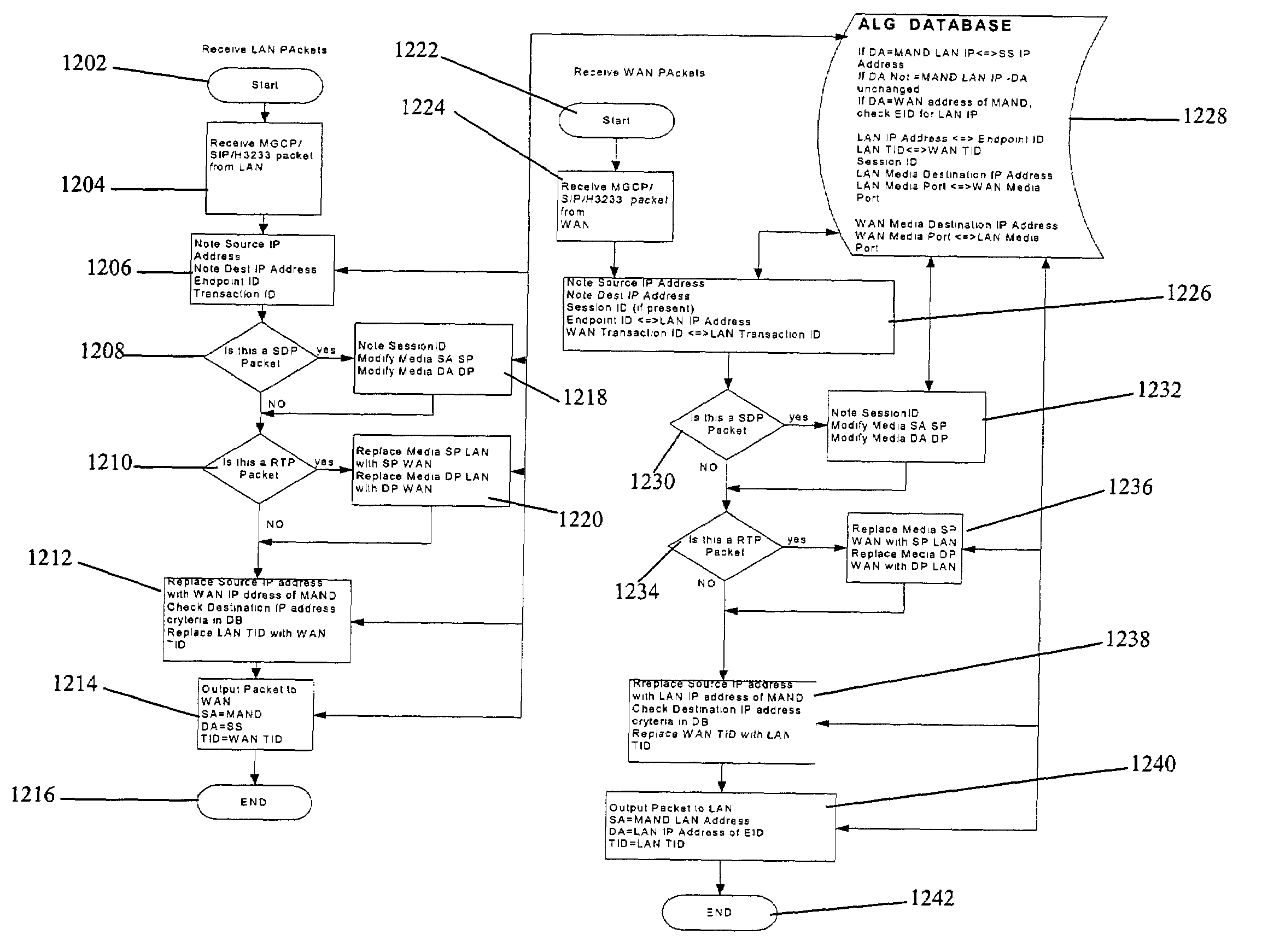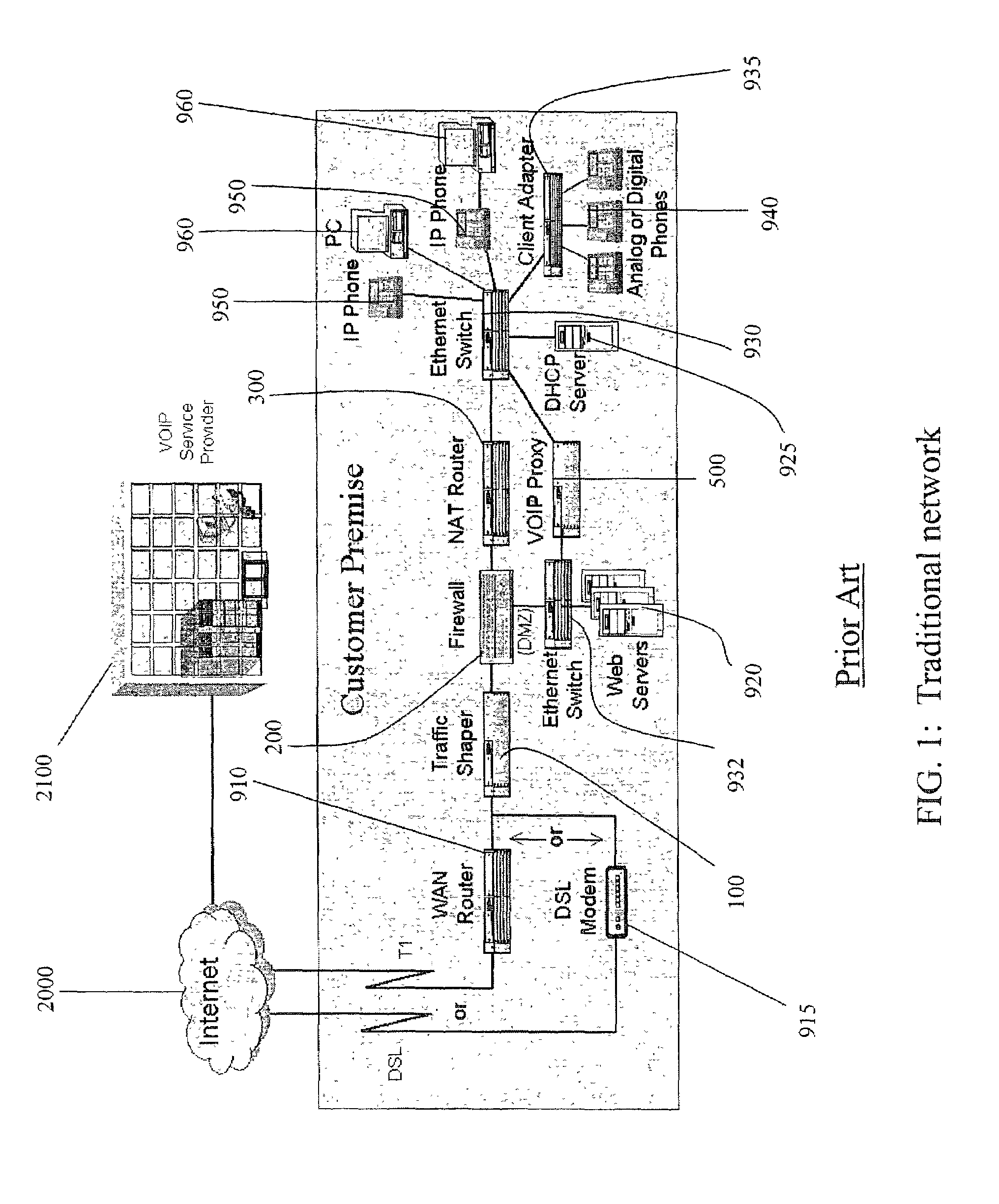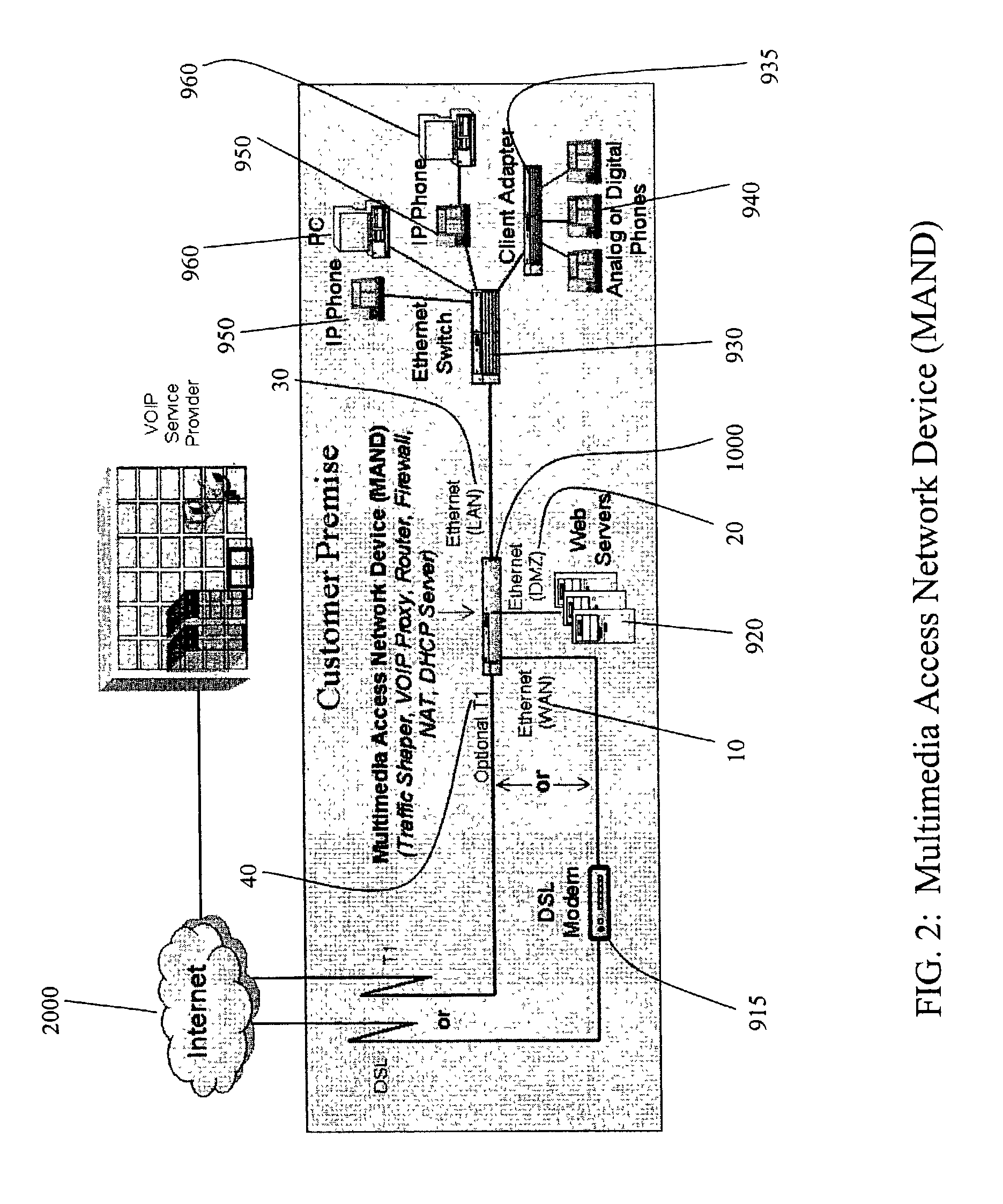Method and system for implementing and managing a multimedia access network device
a network device and multimedia technology, applied in the field of network devices, can solve the problems of dhcp (dynamic host control protocol), complex task of configuring and managing these separate network devices to support traditional and multimedia traffic, and obviously require enormous amounts of time and skilled resources,
- Summary
- Abstract
- Description
- Claims
- Application Information
AI Technical Summary
Benefits of technology
Problems solved by technology
Method used
Image
Examples
Embodiment Construction
[0043]As noted previously, many network devices are typically required to support a multimedia and data network. FIG. 1 shows a typical data and multimedia network system including the various network devices. As shown in FIG. 1, a typical prior art network includes devices such as a WAN router 910 or DSL modem 915, traffic shaper 100, firewall 200 with optional VPN and encryption endpoints, Web servers 920, NAT (Network Address Translation) router 300, VoIP proxy 500, DHCP (Dynamic Host Control Protocol) server 400, IP phones 950, PCs 960, client adapters 935 and analog or digital phones 940. Configuring and managing these separate network devices to support traditional and multimedia traffic, including VoIP, is a very difficult and complex task. Each and every device must be configured and managed in order for each to “hand-shake” or be compatible to each other. These activities obviously require tremendous amounts of time and skilled resources. The novel aspects of the present in...
PUM
 Login to View More
Login to View More Abstract
Description
Claims
Application Information
 Login to View More
Login to View More - R&D
- Intellectual Property
- Life Sciences
- Materials
- Tech Scout
- Unparalleled Data Quality
- Higher Quality Content
- 60% Fewer Hallucinations
Browse by: Latest US Patents, China's latest patents, Technical Efficacy Thesaurus, Application Domain, Technology Topic, Popular Technical Reports.
© 2025 PatSnap. All rights reserved.Legal|Privacy policy|Modern Slavery Act Transparency Statement|Sitemap|About US| Contact US: help@patsnap.com



